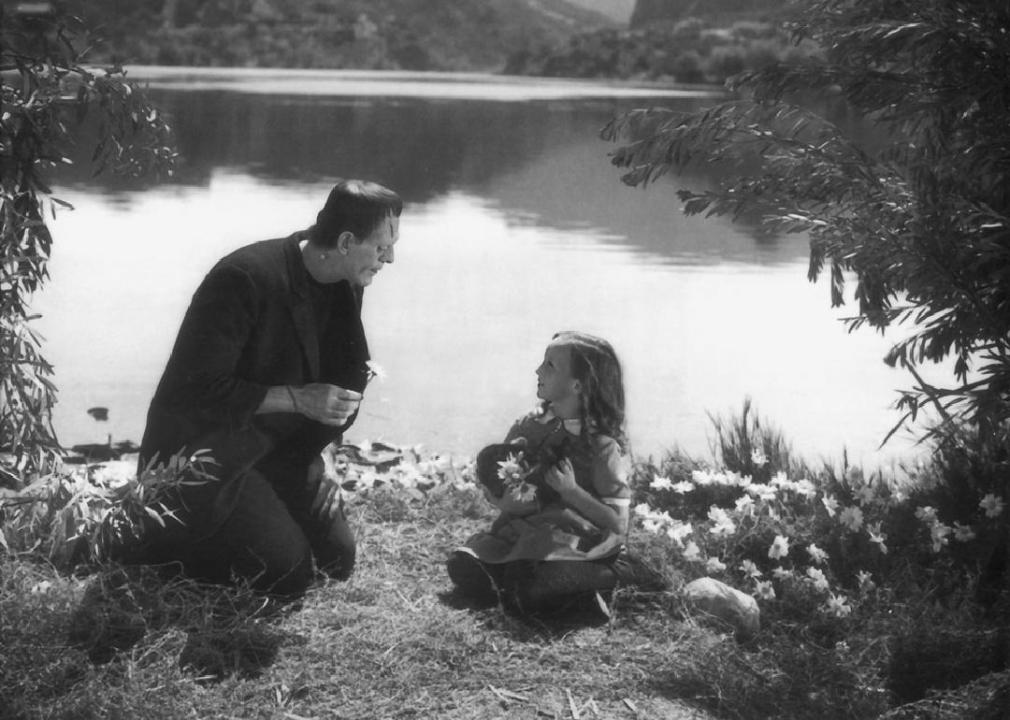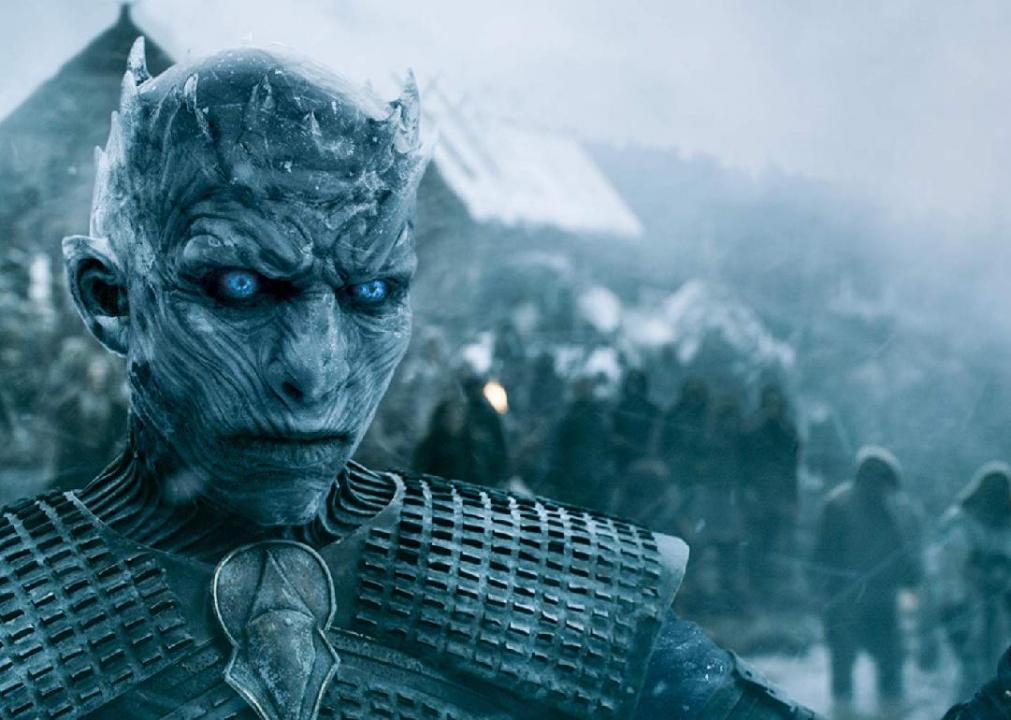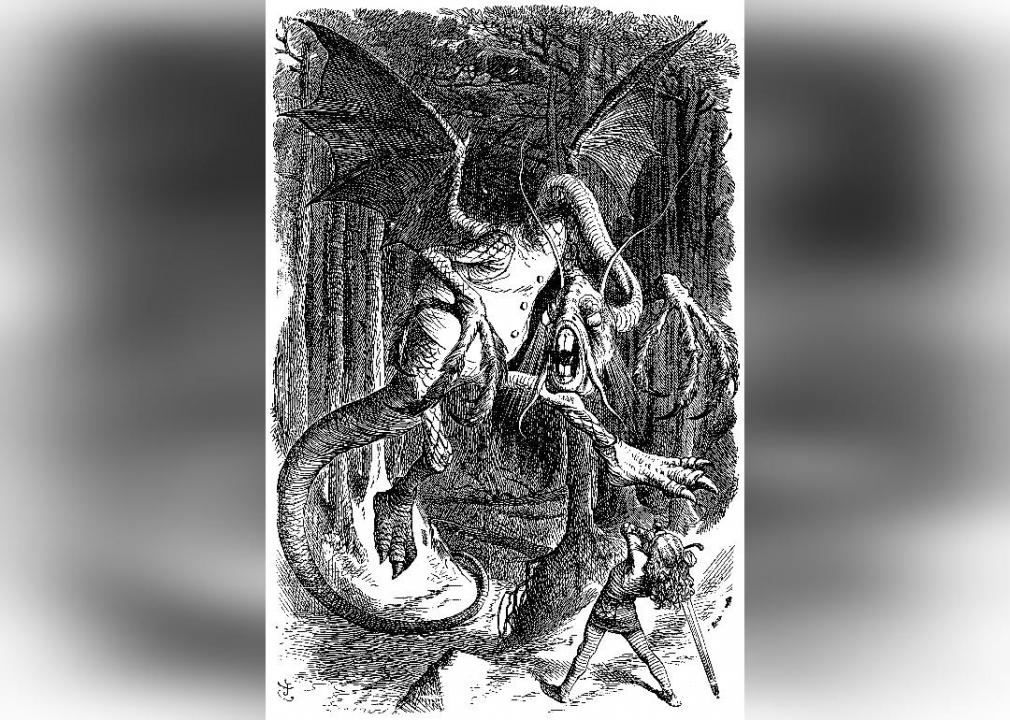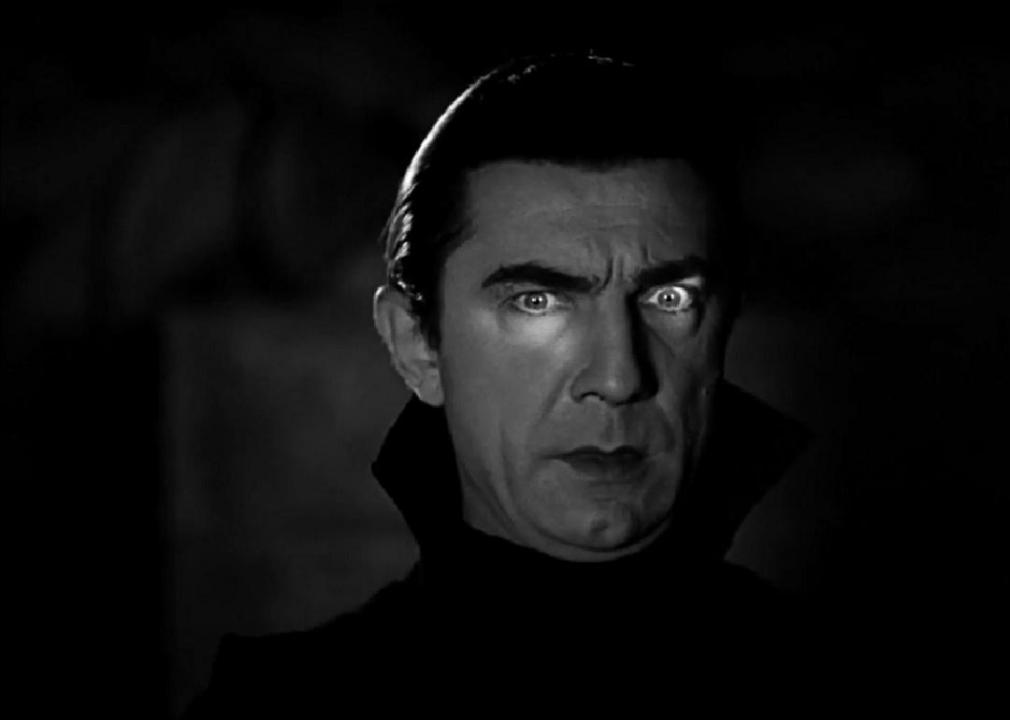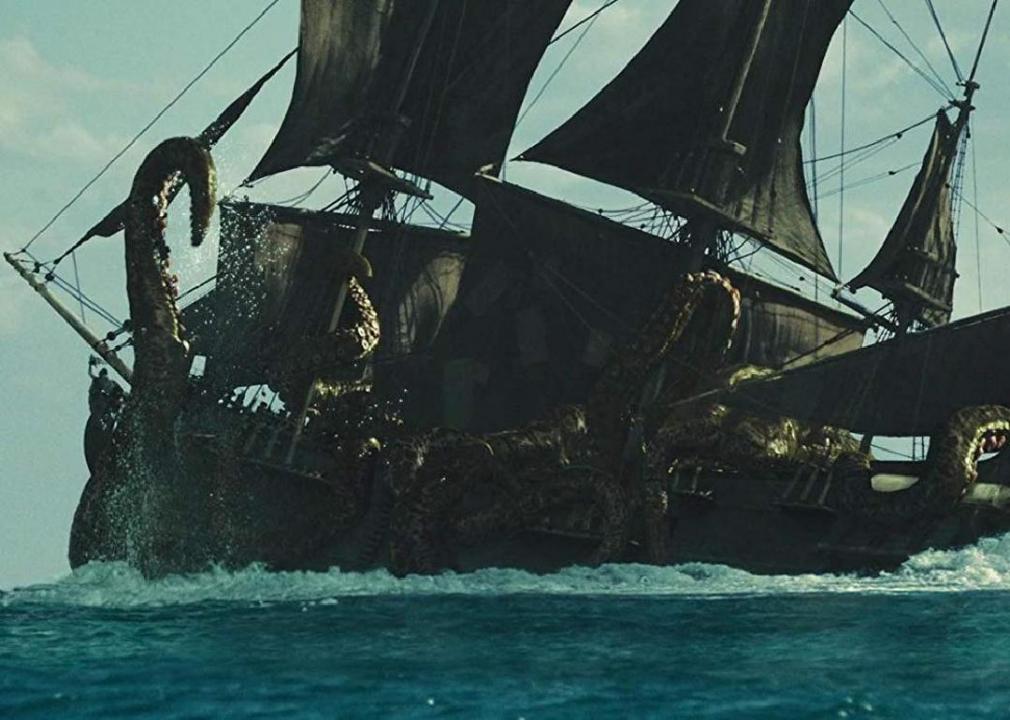Terrifying monsters in literature
Universal Pictures
Terrifying monsters in literature
While we all cheer for classic heroes like Superman, Spiderman, Thor, and so on—but it’s the characters with steeper development arcs, more conflicted motives and backstories, and questionable ethics that tend to stick with us. The success of television shows like “Dexter,” “Game of Thrones,” “Breaking Bad,” and “The Sopranos” demonstrate time and again there is no lack of interest in the anti-hero.
This may be because there are few times we judge something as being objectively good or objectively evil. As morality is typically judged in the context of the circumstances the actions occur in, the notion of a “bad guy” can be less than definitive. In “Breaking Bad,” Walter White’s decision to produce and sell crystal meth is borne out of necessity via a terminal cancer diagnosis. The drug trade stands to set his young family up for life after he’s gone. As the show progressed, White became increasingly more diabolical in his actions. However, as everyone else around him devolved, his actions remained relevant and relatable.
There are times, however, where we seek to push ourselves beyond the subjective. Mark Twain once wrote, “There is a charm about the forbidden that makes it unspeakably desirable.” Sometimes, we push ourselves toward that which is dark and scary because we crave the adrenaline boost. Sometimes, we are drawn to the appeal of the “charismatic monster.” Sometimes, our love of these monsters helps to explain our world and our place in it. And our embrace of monsters in fiction and folklore can be seen as a conceit that there are real monsters in the world.
Stacker compiled a gallery of 15 terrifying monsters in literature. We focus on how these monsters were depicted on the printed page—delving into the deeper origins of the monster and how they came to haunt readers around the world.
Keep reading to see if your favorite monster made the list.
You may also like: A timeline of halloween history
![]()
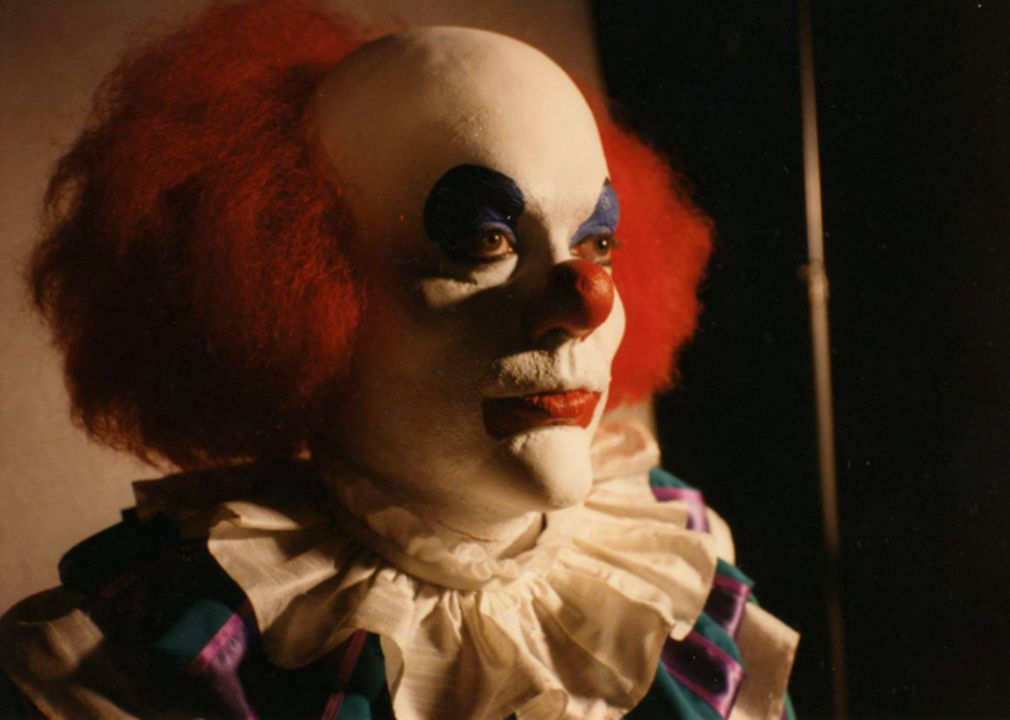
Green/Epstein Productions
Pennywise
– First appearance in: “It”
– Author: Stephen King
– Year: 1986
Pennywise the Dancing Clown is a manifestation of It, the title character of Stephen King’s horror novel and the movies the book inspired. An ancient cosmic evil that feeds off the fear of children, It is a shapeshifter that ended up on Earth after an asteroid strike during the prehistoric period. Sleeping approximately 30 years at a stretch, It wakes to feed, assuming the shape of what is feared the most by its prey. Pennywise’s true form is a swirling mass of orange lights that causes insanity or instant death on anyone who looks upon it. The name “It” came from the Losers Club, the group of kids Pennywise targeted in the events detailed in the novel. The idea of It being a clown came from Stephen King’s belief that clowns are inherently scary to children.
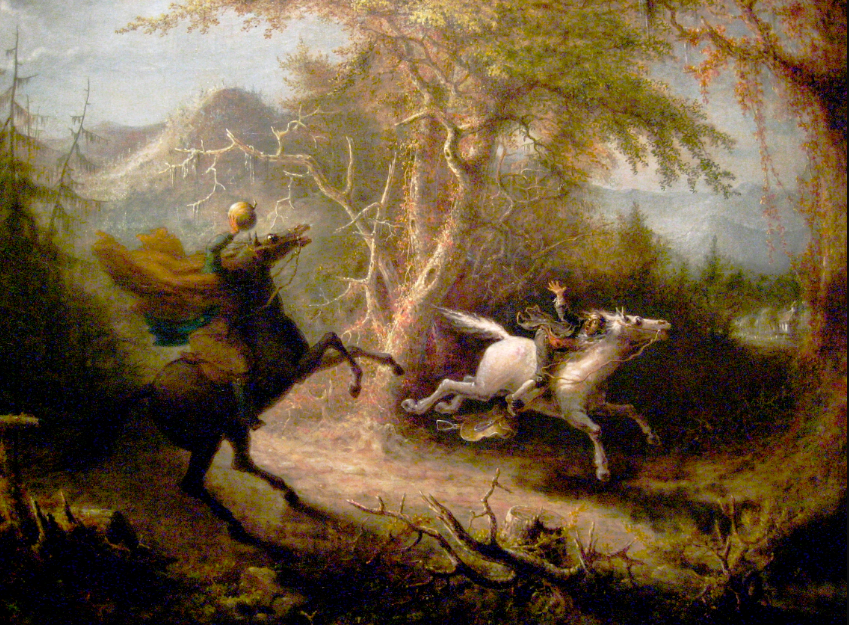
Public Domain
Headless Horseman
– First appearance in: “The Legend of Sleepy Hollow”
– Author: Washington Irving
– Year: 1820
While the Headless Horseman was a significant character in Washington Irving’s short story “The Legend of Sleepy Hollow,” the character did not originate there. Existing at least since the Middle Ages, the Headless Horseman has appeared as the dullahan in Irish mythology, where a headless fairy carrying his own head while riding a black horse would travel the countryside, looking to carry away the souls of the dying. The Green Knight of the Arthurian tale “Sir Gawain and the Green Knight” was also a headless horseman, who lost his head in a deal where Gawain was to strike him with an ax if the knight could strike Gawain, in turn, a year later.
Home Box Office (HBO)
White Walker
– First appearance in: “A Game of Thrones”
– Author: George R.R. Martin
– Year: 1996
White Walkers are the supernatural threat in George R.R. Martin’s novel series “A Song of Ice and Fire.” Referenced as “the Others,” they are the third race of beings present in Westeros along with the First Men and the Children of the Forest millennia before the events of the series. The Others’ presence brought a night and a winter that lasted a generation. After pushing them back, a magical wall of ice was raised to keep them in the North. Described as tall, hard, and pale, they are surrounded by a moving cold, are invulnerable to everything except fire and dragonglass, and can raise the dead by turning them into zombie-like wights. Wights animated by the White Walkers are immune to dragonglass and can only be killed by fire.
Original illustration from “20,000 Leagues Under the Sea”
The Giant Squid
– First appearance in: “20,000 Leagues Under the Sea”
– Author: Jules Verne
– Year: 1872
For most of human history, the giant squid was thought to be a cryptid—an animal that is thought to be mythical or cannot be proven to exist. In 2004, however, the first pictures of a live giant squid in its natural habitat was published, with the first filming of a giant squid occurring in 2012. In Jules Verne’s time, however, there were unsubstantiated stories of the mollusk and various remains, such as sperm whale skin with giant squid sucker marks. The giant squid has appeared multiple times in literature, from the Kraken in Norse mythology to “Moby-Dick” and, most notably, “Twenty Thousand Leagues Under the Sea.” The book suggested that the Nautilus—the submarine captained by Nemo that is the setting of most of the book—was attacked by poulpes. The common interpretation of “poulpes” is “giant squid,” although “poulpes” in French means “octopuses.”
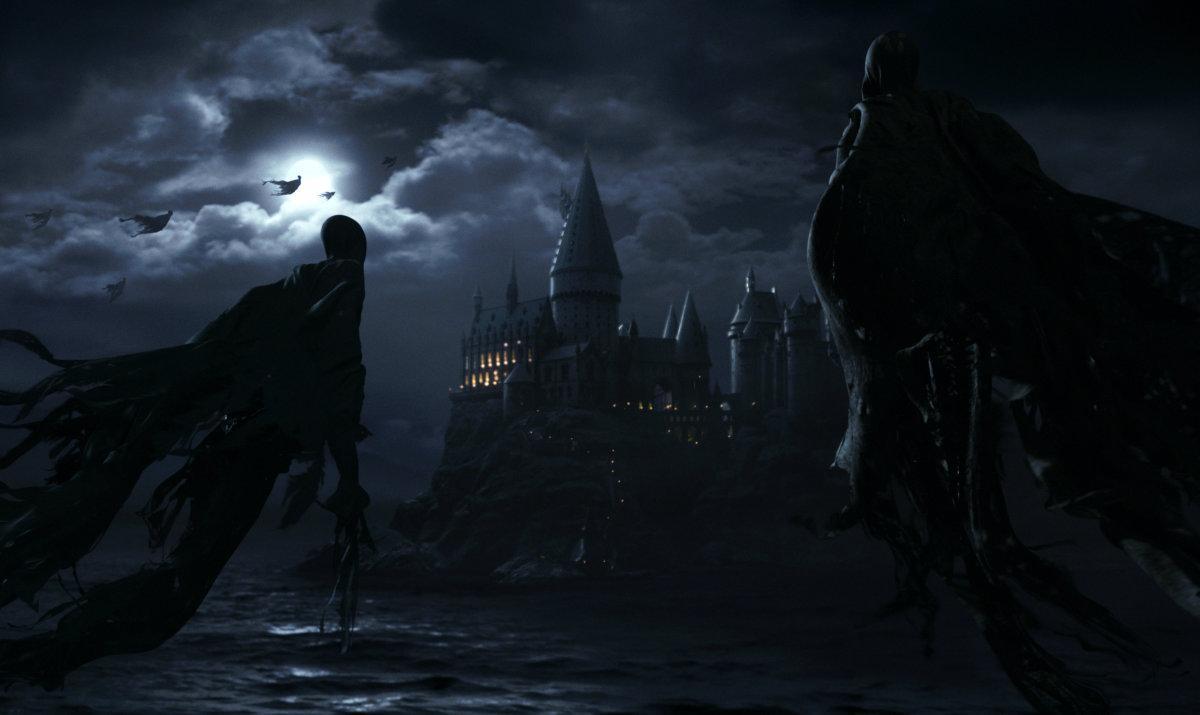
Warner Bros.
Dementors
– First appearance in: “Harry Potter and the Prisoner of Azkaban”
– Author: J.K. Rowling
– Year: 1999
The Dementors are the foulest of the foulest in the Harry Potter Universe. Wraithlike creatures, Dementors consume human happiness, joy, and emotional warmth to the point that only despair exists. Dementors can also steal souls, leaving victims in a vegetative state. Originally hired as guards for the Prison of Azkaban, they betrayed the Ministry of Magic to join Lord Voldemort in his war against the Wizarding World. After the conclusion of the Second Wizarding War, the surviving Dementors were fired from their guard roles. Dementors have no true loyalties, no true weaknesses—although certain things can ward them off—and no true way of being killed.
Original illustration from “Through the Looking-Glass, and What Alice Found There”
Jabberwock
– First appearance in: “Through the Looking-Glass, and What Alice Found There”
– Author: Lewis Carroll
– Year: 1871
The Jabberwock is the monster of the nonsense poem “Jabberwocky,” by Lewis Carroll. The poem would be integrated into Carroll’s future novel “Through the Looking-Glass, and What Alice Found There.” The poem—illegible unless read through a mirror—is nearly uninterpretable when read. This may refer to the fact that the poem is meant to be about a dream. The poem describes the Jabberwock as having “eyes of flames,” “jaws that bite,” and “claws that catch.” While the traditional image of the Jabberwock is something imposing, like a dragon, the poem suggests that it is something that can be slain.
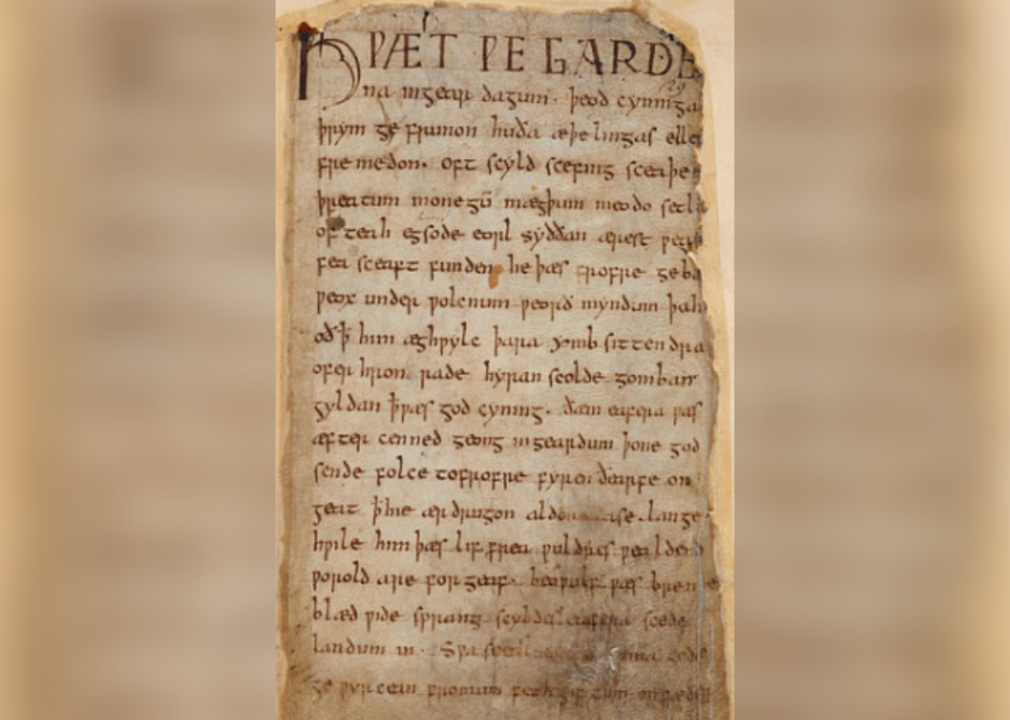
Public Domain
Grendel
– First appearance in: “Beowulf”
– Author: Anonymous
– Year: circa 1000 A.D.
Grendel is one of the three opponents Beowulf must meet in the epic poem “Beowulf” (the other two being Grendel’s mother and the Dragon). A descendant of Cain, Grendel is described as both a giant and a monster. He is greatly feared, seen to be a destroyer of man, and is thought to be cursed and removed from God’s graces. Being unable to stand the merriment coming from Herot’s mead-hall, Grendel attacks it and continues attacking it every night for 12 years, killing and consuming many and effectively shutting down the hall. Beowulf leads a group of warriors to stay in the mead-hall overnight to confront Grendel. In the resulting fight, Beowulf rips off Grendel’s arms, mortally wounding the giant. Grendel manages to return to his den before dying, and while tracking Grendel, Beowulf crossed paths with Grendel’s mother, who he also kills after nearly dying himself.
Wikimedia Commons
Count Dracula
– First appearance in: “Dracula”
– Author: Bram Stoker
– Year: 1897
Dracula is a complicated character. First introduced in Bram Stoker’s novel “Dracula,” the word “Dracula” literally refers to “Little Devil,” a term used for the real-life Vlad III Dracula, a three-time ruler of Wallachia, a region in historic Romania. Vlad fought a war of attrition against the invading Ottomans, using terror tactics including scorching the earth and impaling live victims on pikes. While these tactics were considered excessive both then and now, they are recognized in modern scholarship as desperation acts. In Stoker’s day, however, only the stories of brutality were told without the surrounding context. Stoker simply made a crude connection of the Romanian folklore of vampires and the stories about Vlad Dracula.
In the novel, Vlad Dracula renounces God after his wife commits suicide, fearing that her husband perished repelling the Ottomans. The act of renouncement turns Dracula into an immortal monster who must both sleep in his native soil and feast on blood to retain his powers, which includes shape-changing, the ability to travel as mist or in the guise of animals, superhuman strength, and the ability to create followers by feeding them his blood. Upon moving to London, Dracula falls in love with Mina Murray, who reminds him of his dead wife. After a number of deaths, Murray’s fiance, Jonathan Harker, accompanied by Abraham van Helsing, chase the vampire back to Transylvania in order to break Dracula’s hold on Murray.
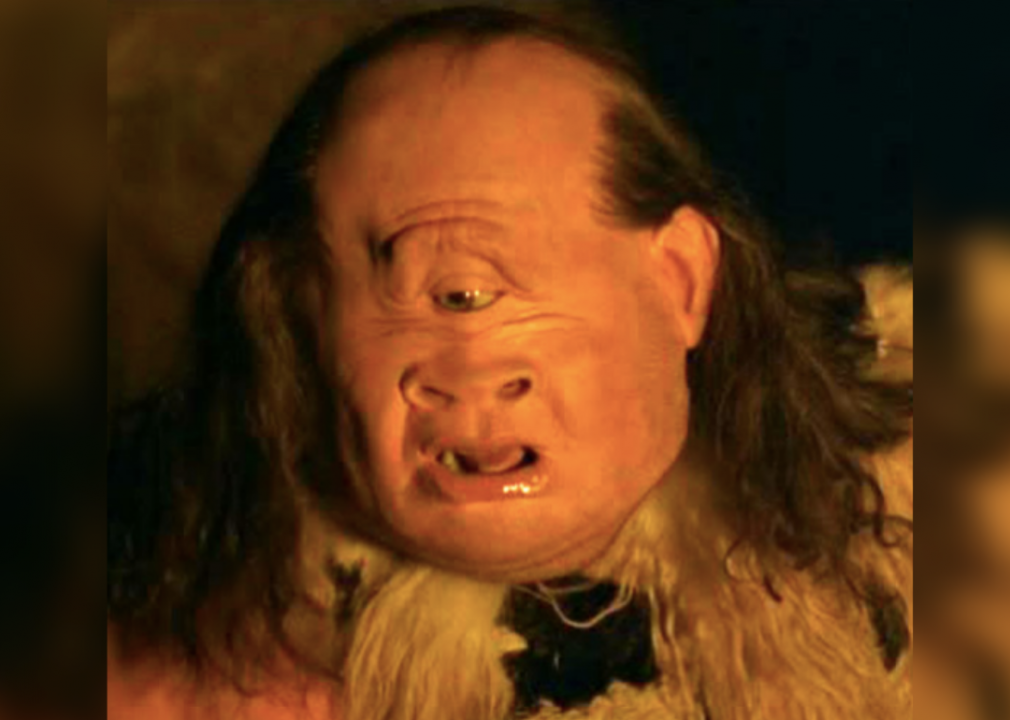
American Zoetrope
Cyclops
– First appearance in: “The Odyssey”
– Author: Homer
– Year: circa 700 B.C.
The Cyclops is a one-eyed monster of Greek mythology. Likely an attempt to explain elephant skull fossils, where the large nasal opening could be inferred to be a single eye socket, the Cyclops were essential parts of Greek lore. However, they were depicted differently by various authors. In Hesiod’s “Theogony,” the Cyclops gave Zeus his thunderbolt. These Cyclops were the sons of Uranus, god of the sky, and Gaia, goddess of the Earth. They were the brothers of the Titans, the uncles of the Olympian gods, and the key to Zeus’s eventual overthrowing of the Titans.
In Homer’s “Odyssey,” the sole Cyclops named was Polyphemus, the son of Poseidon, who was forced to live apart from the rest of his kind. Homer’s Cyclops lived in a world of men, instead of among the gods, as Hesiod’s Cyclops did. Homer’s Cyclops was a lawless, uncivilized shepherd, while Hesiod described them as skilled builders and faithful servants of the Olympian gods. Finally, there was a class of Cyclops that built the walls surrounding Mycenae, Tiryns, and Argos. These Cyclops were similar to the Hesiod Cyclops in that they were both described as gifted builders.
Walt Disney Pictures
The Kraken
– First appearance in: “The Kraken”
– Author: Alfred Tennyson
– Year: 1830
As explained previously, the giant squid has been a part of mythology for most of human history. The Scandinavian take on the giant squid is the Kraken. The Kraken was a monster cephalopod that attacked ships off the coasts of Norway and Greenland. First appearing in the natural history book “Konungs Skuggsjá,” the monster would appear in other Norse sagas. In 1830, Alfred Tennyson wrote the sonnet “The Kraken,” which made the giant squid a legendary monster. The novels “Moby-Dick” and “20,000 Leagues Under the Sea” made reference to a similar monster.
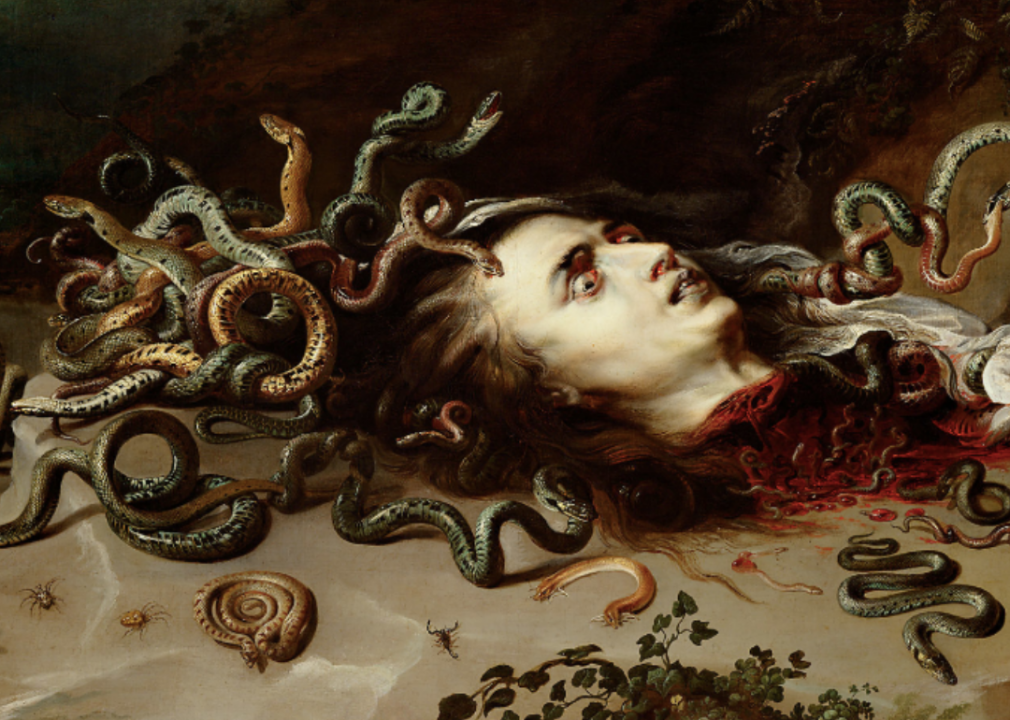
Public Domain
Medusa
– First appearance in: “Theogony”
– Author: Hesiod
– Year: circa 700 BC
The story of Medusa is a perverse one that, according to modern sensibilities, may be best described as a tragedy. In Greek mythology, Medusa was a priestess to Athena, renowned for her great beauty and beautiful hair. Swearing her undying fealty to Athena, Medusa resolved to stay a virgin and pure in the goddess’ eyes. Medusa was a Gorgon, one of the three daughters of the marine gods Phorcys and Ceto. This helped to explain her beauty, as well as her demise, as Poseidon, the god of the sea, was enamored with her. Frustrated with Medusa’s refusal to give herself to him, Poseidon raped and impregnated Medusa. Instead of punishing Poseidon, Athena punished Medusa for breaking her oath, turning her prized hair into snakes, changing her great beauty to great ugliness, and making it so that anyone that sees her face would be turned to stone.
Medusa would be as desired in infamy as she was in beauty. To save his mother, Perseus was tasked with decapitating Medusa. Instead of dissuading Perseus, Athena actually helped him by giving him a mirrored shield and helping him secure winged sandals from Hermes, a sword from Hephaestus, and a helm of invisibility from Hades. Perseus’ slaying of Medusa brought forth Pegasus the Winged Horse and the giant Chrysaor—both of whom Medusa was pregnant with. The blood from Medusa’s head was thought to be the origins of snakes in Africa. Medusa’s head was given to Athena, where she placed it in the center of her shield.
While the story of Medusa can be seen as a way of justifying the heroics of Perseus, it can also be read as a morality tale illustrating that not even the gods were above the sins of pride, hubris, and jealousy. The placing of Medusa’s head on Aegis, Athena’s shield, could be read as an acknowledgment of Medusa’s loyalty to the goddess, which was not always returned.
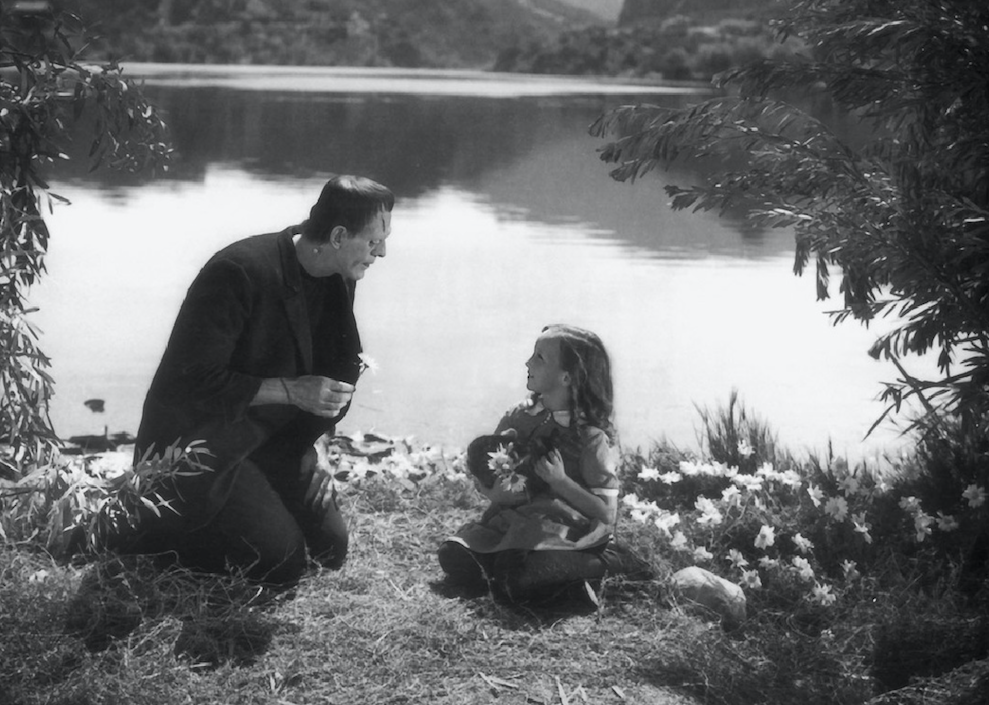
Insomnia Cured Here // Flickr
Frankenstein’s Monster
– First appearance in: “Frankenstein; or, The Modern Prometheus”
– Author: Mary Shelley
– Year: 1818
The monster of Mary Shelley’s “Frankenstein, or, The Modern Prometheus” was a reflection of the growing interest in neuroscience and the role of electricity in the human body in Shelley’s time. Shelley was only 19 when she wrote the book, and while she would be largely known for her role in publishing and promoting her husband’s work, “Frankenstein” and her other books, including “The Last Man,” showed a keen political mind and a well-developed criticism of Romanticism.
The monster, borne from his creator Dr. Victor Frankenstein’s desire to understand and control death, is cobbled from parts of recently deceased criminals and other individuals. The monster, which is not given a name by Frankenstein, was described by Shelley as being 8 feet tall, with yellow skin, black hair, pearly white lips, a well-proportioned body with beautiful features, a shriveled complexion, and watery, set eyes. While not necessarily evil, the monster hates his creator. It asks Frankenstein to make him a mate so he will no longer be lonely, and Frankenstein agrees but destroys the second creation out of fear the two will sire a race of monsters. The monster kills Frankenstein’s best friend and bride in revenge, triggering Frankenstein to hunt down the monster. In the Arctic Circle, Frankenstein contracts pneumonia and dies. The monster, in grief, cremates the body and departs, never to be seen again.

New Line Cinema
Balrog
– First appearance in: “The Lord of the Rings”
– Author: J.R.R. Tolkien
– Year: 1954
Balrogs are a race of fierce creatures, first appearing in J.R.R Tolkien’s “The Lord of the Rings.” The Fellowship of the Ring first encounters a balrog known as Durin’s Bane in the Mines of Moria. Balrogs are corrupted lesser angelic beings (Maiar) that were bent to the service of Vala Melkor. The Balrogs went into hiding in the deepest pits when the Valar captured Melkor during the Awakening of the Elves. The Balrogs are tall beings shrouded in darkness, shadow, and fire. They are sometimes armed with a long sword or fiery whips. As the wizards are Istari, a class of the Maiar, Balrogs have comparable power and strength to the wizards, such as Gandalf the Grey, and later, the White.
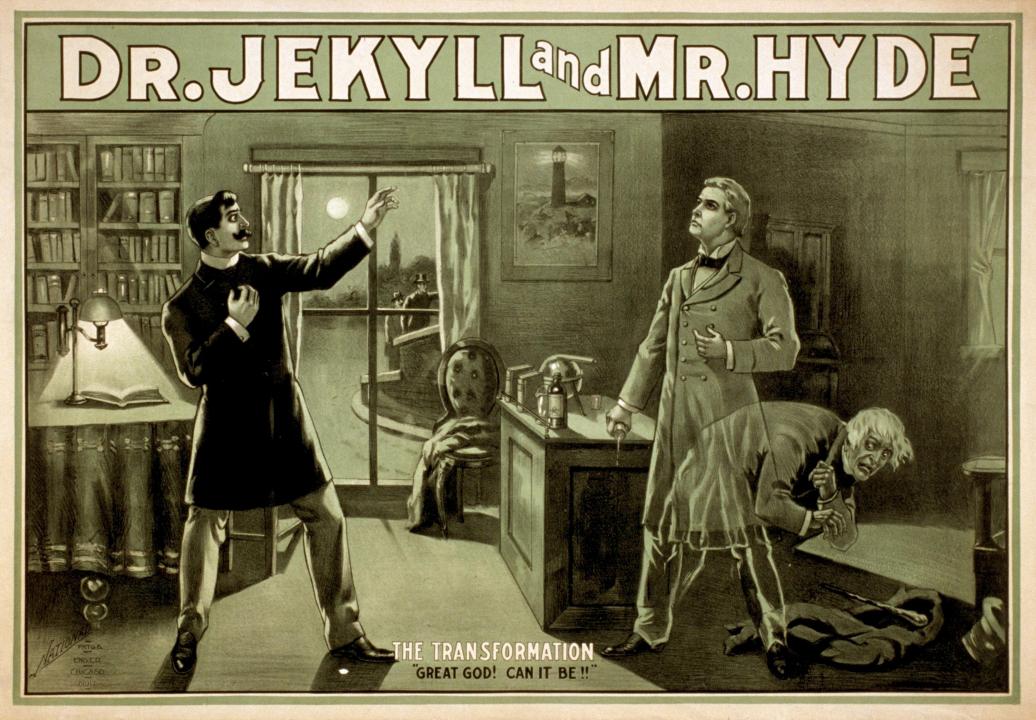
Library of Congress
Mr. Hyde
– First appearance in: “The Strange Case of Dr. Jekyll and Mr. Hyde”
– Author: Robert Louis Stevenson
– Year: 1886
Mr. Edward Hyde is the alternative personality of Dr. Henry Jekyll in Robert Louis Stevenson’s “The Strange Case of Dr. Jekyll and Mr. Hyde.” Written at a time when dissociative identity disorder was not well understood, the notion of a person with distinct and separate personalities was a unique and interesting way to discuss a person’s personal struggle between his desires and his social expectations.
In the novella, Dr. Henry Hyde is attempting to suppress his alter ego, but is having difficulty doing so. The good-natured doctor formulates a concoction, using an unknowingly contaminated salt, to permanently mask Mr. Hyde, a violent sociopath. Instead, the serum immediately changes the doctor into Hyde. Hyde engages in a streak of murders, while Jekyll desperately works to suppress his violent half. Over time, Jekyll loses the battle, as Hyde finds ways to make himself known—eventually, without the need of the serum or any sign of weakness on Jekyll’s part. When Jekyll’s serum ingredients run low and he restocks, he realizes that the serum’s effectiveness was due to an unknown contaminant. Unable to recreate the serum, Jekyll concedes he will eventually fade away into Hyde and that Hyde will either kill himself or be executed in response to the murders.
A key distinction in the transformation is that Jekyll and Hyde looked different from each other; Dr. Jekyll was large, well-made, and about age 50 in appearance, while Edward Hyde was smaller, younger, and crueler in appearance. While this part is not in keeping with the notion of multiple personalities, it does suggest a notion of duality.
Metro-Goldwyn-Mayer (MGM)
Wicked Witch of the West
– First appearance in: “The Wonderful Wizard of Oz”
– Author: L. Frank Baum
– Year: 1900
Another complicated character, the Wicked Witch of the West, has been reexamined by modern revisionists. The Wicked Witch of the West first appeared in L. Frank Baum’s “The Wonderful Wizard of Oz,” where she ruled over Winkie Country. She teamed up with the Wicked Witch of the East, the Wicked Witch of the South, and Mombi to conquer the Land of Oz, dividing it among themselves. While not particularly powerful in her own right, she does express great power through the creatures she controls. Through the Golden Cap, for example, she can compel the winged monkeys to obey three of her commands. In the novel, the witch’s fascination with Dorothy Gale is solely based on Gale’s possession of the silver shoes, which are a power multiplier. As Gale is protected by the Good Witch of the North’s kiss, the Wicked Witch of the West cannot kill her, but she does enslave Gale. When the witch makes Gale trip over an invisible bar, forcing one of the silver shoes off, Gale angrily throws a bucket of water on the witch, killing her. Water is argued to be a purifying element in many religions, so arguably it “purified” the witch.
The revisionist novel “Wicked: The Life and Times of the Wicked Witch of the West” painted the witch in a more sympathetic light. Named Elphaba, this witch was the illegitimate daughter of the Wizard of Oz, sired when he raped Elphaba’s mother, Melena Thropp. Through her mother, Elphaba was a princess of Munchkinland, eligible to claim the land’s highest title. Her green skin denied her a father’s love, despite the fact that her sister was born with no arms. She would become best friends with Glinda, the Good Witch of the North. Following the death of her lover, Elphaba turned to magic and joined the Wizard of Oz resistance, as the Wizard was seen to be a tyrant. When Dorothy Gale’s house crushed her sister, she was reunited with Glinda. But after learning that Glinda gave away the slippers that her father gave to her sister, she became enraged. The two would remain estranged until Elphaba’s death from the bucket splash, as detailed in the Baum novel. In the musical, however, Elphaba has no such water allergy and used the rumor to escape and to get a fresh start, escaping through a trapdoor in the ensuing confusion.
You may also like: The best streaming services in 2021
